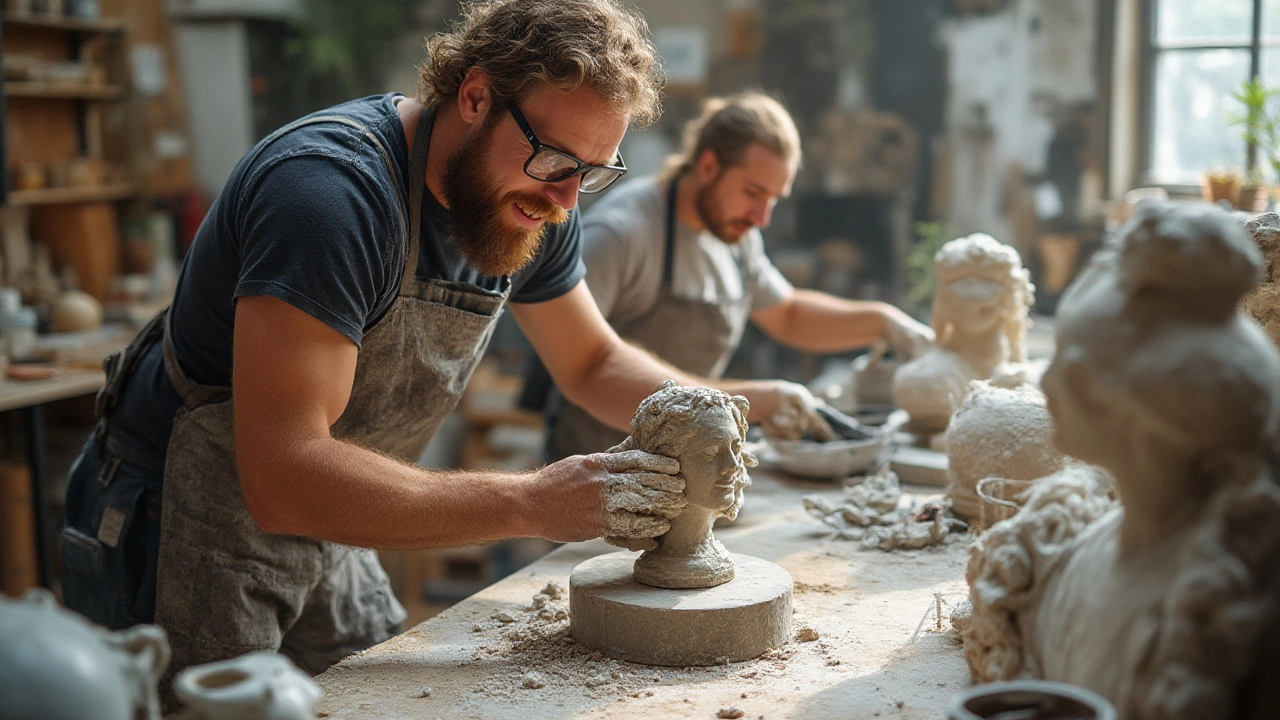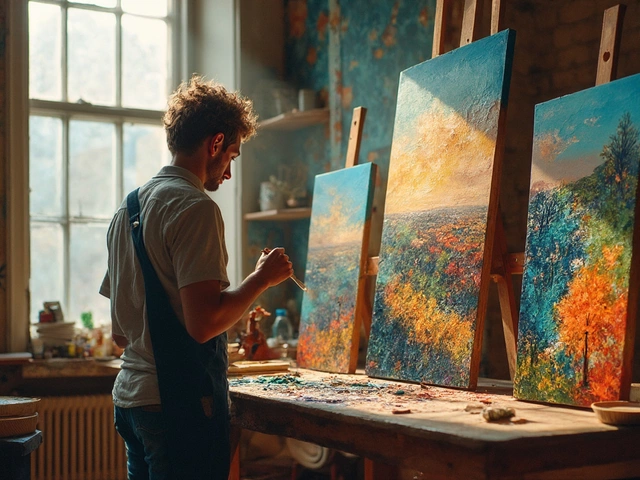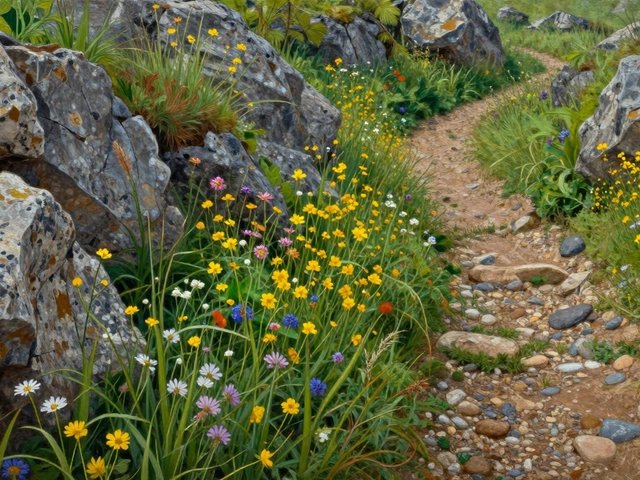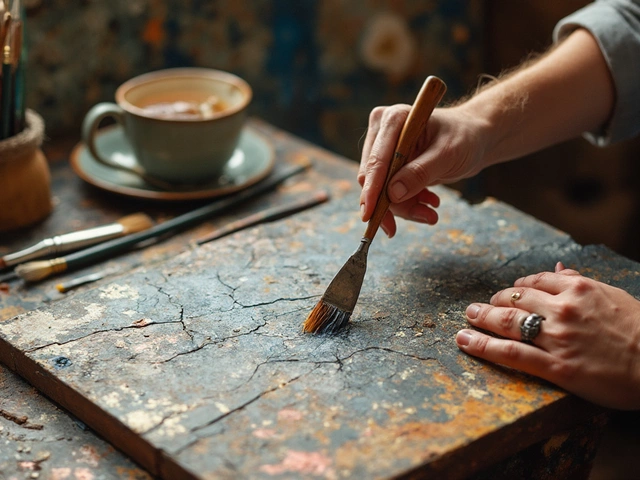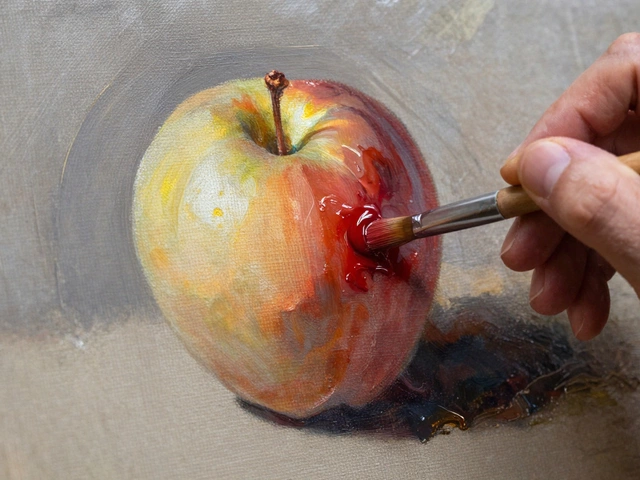Go to any art museum and you’ll see sculptures that seem like they’ve always existed—powerful, expressive, almost breathing. But getting a chunk of marble or a twist of wire to feel alive isn’t magic. Every sculpture out there stands on the shoulders of four basic techniques: carving, modeling, casting, and assembling. Forget what you know about picture-perfect statues; these methods are as raw as it gets, and every artist, from Michelangelo to your neighbor shaping driftwood, leans on them.
Carving: The Art of Subtraction
Carving is the most primal of sculpture techniques—and arguably the most dramatic. Imagine staring at a block of marble, a slab of limestone, a hunk of wood, and challenging it to a duel. In carving, the artist subtracts everything that doesn’t belong until the form emerges. That’s how Michelangelo coaxed David out of lifeless stone. The process is unforgiving; make the wrong cut, and there's no going back. If you've heard “measure twice, cut once,” you understand the patience this art demands.
Many carvers sketch directly on the raw material before touching it with a chisel or mallet. Once you begin, it’s all about reading veins in marble, or knots in wood, and working with—never against—the material. Talk about rogue, right? The texture left by chisel marks, the shadowy grooves, all add to the story. In Vancouver, where driftwood regularly washes ashore, local artists use carving to celebrate west coast nature—sometimes whittling down giant logs into lifelike or abstract forms that decorate city parks.
Safety is more than a concern—it's a lifestyle for carvers. Those chisels are sharp, and rock dust gets everywhere. Stone carvers often wear masks and goggles, listening to podcasts or blasting local indie radio through a thick layer of dust, hour after hour. Some use pneumatic tools, but traditionalists swear by hand tools for their tactile feedback. Ever tried carving soap as a kid? That’s the basic idea, scaled up to intimidating and expensive materials. Ancient Egyptians, medieval craftsmen, Inuit soapstone artists—they all share this love for the transformative destruction of carving.
Modeling: Shaping with Hands-On Control
If carving is about taking away, modeling is about adding on. Think of working with clay––squeezing, pinching, rolling coils, and slapping on more material until it looks right. This technique is all about flexibility. Unlike carving, you can add, remove, or reshape masses at any stage. This is why clay, wax, and sometimes even Play-Doh are so friendly for beginners and professionals alike.
What’s wild is that many of the world’s most famous bronze statues were first modeled in clay. The sculptor gets their hands dirty, literally feeling the form, making mistakes, fixing them on the fly. Portrait busts, giant figurative works, cartoonish animals—all start as a squishy pile. Sometimes, artists use armatures, wire skeletons that keep things from collapsing under their own weight. If you were ever told to use “enough support” in a craft project, this is why. Artists in Vancouver’s thriving ceramics scene often experiment with modeling, blending traditional hand-building and modern 3D-printed forms.
There’s a kind of freedom in modeling you just don’t find elsewhere. Press your thumb into clay, and you leave a fingerprint—trace evidence of the artist’s hand, centuries later. Sculptors often keep their works moist with water or wrap them in plastic to prevent drying between sessions. Temperature and humidity can change everything. Look at Rodin’s ‘The Thinker’—each muscle, each furrowed brow started as a pinch and a press. This method is perfect for trying ideas quickly: add a nose, see if it works, smudge it off if it doesn’t. Animation studios even use digital clay (“digital modeling”) to build characters in pixels instead of mud, but it’s the exact same logic.
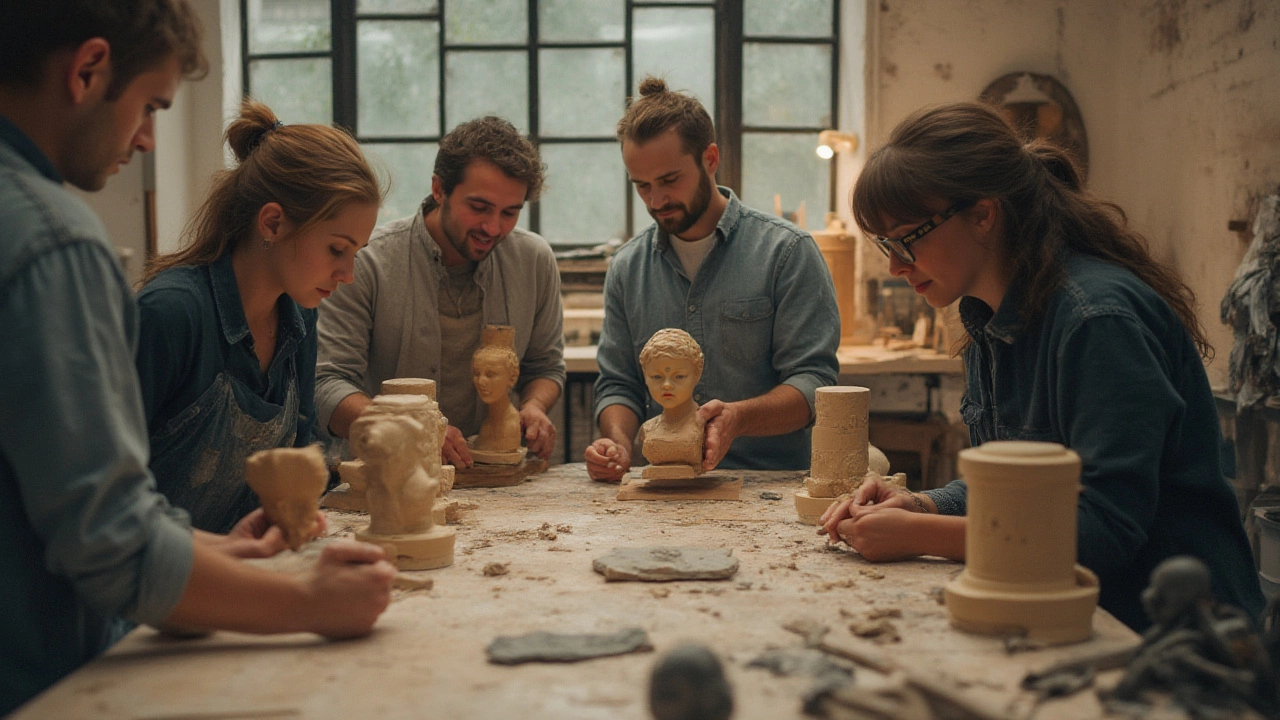
Casting: Freezing Moments in Metal or Stone
Once you’ve got a model you love (and it’s not about to fall apart), you may want something permanent. Enter casting. This is the technique for making copies—turning a soft creation into bronze, concrete, resin, and more. The process uses molds, and often involves a series of wild transformations. Let’s say you molded a figure in wax. Next, you cover it in a heat-resistant shell, maybe plaster or ceramic, and bake it in a kiln. The wax melts away, leaving a void—that’s where you pour molten metal in. This is called the lost wax method, and it’s how everything from ancient Greek statues to Vancouver’s public art is born.
Modern casting gets even more creative. Silicone molds let artists replicate ultra-fine detail—from pores in skin to tiny tool marks. Some artists mix up their own resins for wild effects: glowing in the dark, sparkling like quartz, or perfectly matching human flesh tones. Why stop at bronze? Concrete, acrylic, glass—all are fair game. Back in university, I watched a team help a local artist cast a gigantic salmon from aluminum; it took three days, two dozen people, and the fish ended up suspended above a cafe in Kitsilano.
Here’s the kicker: casting allows for multiples. Want three identical statues for a garden? No problem. Most professional studios keep plaster “mother molds” on hand so they can rerun old favorites. This technique bridges old and new—ancient bronzes, modern street art, even custom skateboard decks can be made using sculpture casting. Don’t forget, casting needs serious safety measures: inhaling those fumes or getting a splash of 1200-degree metal is a quick way to the ER. But the thrill of peeling a mold off the cooled, solid sculpture never gets old. It's where the magic becomes real.
Assembling: Sculpting by Putting Pieces Together
Now for something that’s less obvious, but arguably the most accessible of all: assembling. The world of sculpture changed forever when artists started sticking unrelated things together to make new forms. Think Picasso hammering tin cans onto wood blocks, or contemporary artists welding bicycle parts into abstract beasts in city alleys. Assembling is about construction—not carving, not modeling, and definitely not casting. It’s the art of gathering and joining materials.
Assemblage stands out because you don’t really need expensive materials or fancy training. Cardboard, bottles, plastic, rebar, driftwood, electronics—anything goes. Vancouver’s street art scene is packed with assemblage; people rescue junk from alleys and turn it into rooftop sculptures that double as social commentary. The choice of glue, screws, rivets, or welding dictates the final look and durability. Ever seen a garden dinosaur made from shovels and gears? That’s assembling in action.
The cool part is how each piece brings its own history. An old shoe becomes the nose, a broken mug becomes the tail. Artists often bounce between techniques—maybe carving a wooden core, modeling details in clay, then assembling found objects all over it. Assembling lets you scale up too. Some of the giant, colorful sculptures at English Bay started life as bits and bobs scrounged from construction sites and thrift stores. Children’s classrooms often tap into this method, letting kids tape together recyclables into wild creatures—and hey, that’s sculpture in its purest, playful form. It's the one method where everyone can be a sculptor, no matter their tools or training.
Beneath the surface, these sculpture techniques are more than art school lingo. They're the tool belt for turning everyday materials—whether stone, clay, metal, or trash—into forms that make people stop and stare. Carving, modeling, casting, assembling: four simple ideas that keep evolving to meet the creativity of each new generation. If you feel inspired, grab some scrap wood, a ball of clay, or whatever’s lying around. Who knows what stories you’ll unlock with your own hands?
